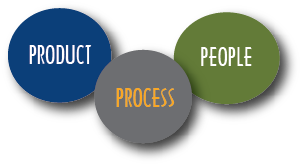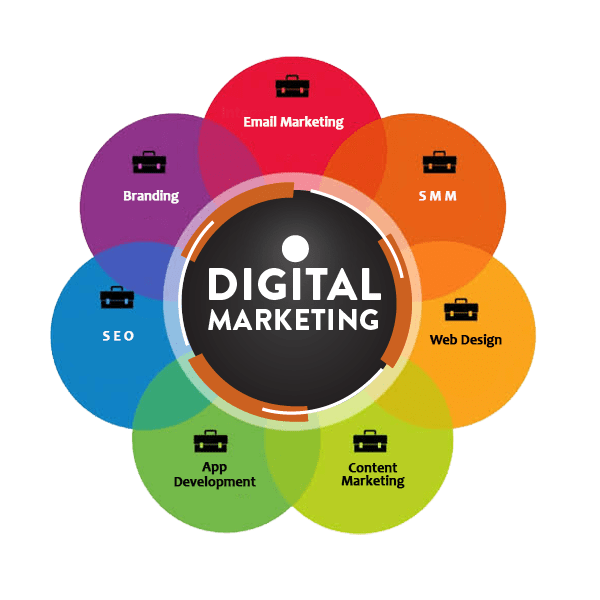Table of Contents
The 3 Ps of Digital Marketing
Introduction: In today’s digital age, businesses must embrace effective marketing strategies to stay competitive and reach their target audience. Digital marketing has become a cornerstone for success, enabling companies to connect with customers, drive brand awareness, and increase sales. One useful framework for understanding the key components of digital marketing is the 3 Ps: People, Platform, and Promotion. In this blog – The Ps of Digital Marketing, the we will explore each of these pillars and their significance in creating a successful digital marketing strategy.

The 3 Ps of Digital Marketing
- People: At the heart of every marketing campaign lies the target audience or the people. Understanding your audience’s needs, preferences, and behavior is crucial to tailor your marketing efforts effectively. Here are a few key aspects to consider when focusing on the “People” aspect of digital marketing:
- Customer Persona: Develop detailed customer personas by gathering demographic data, psychographic information, and understanding their pain points. This information will help you create personalized marketing messages that resonate with your target audience.
- Consumer Journey: Map out the customer journey from the initial point of contact to conversion and beyond. Identify touchpoints where your audience interacts with your brand, and optimize each stage to provide a seamless experience.
- Data Analytics: Leverage data analytics tools to gain insights into customer behavior, preferences, and engagement metrics. Analyzing this data will enable you to make data-driven decisions, optimize campaigns, and maximize your marketing ROI.
- Platform: Choosing the right digital platforms is essential to effectively reach your target audience. With numerous platforms available, it’s crucial to identify the ones that align with your business goals and where your audience spends their time. Consider the following elements when selecting platforms for your digital marketing strategy:
- Website Optimization: Your website is the centerpiece of your digital presence. Ensure it is user-friendly, mobile-responsive, and optimized for search engines. A well-designed website with relevant and engaging content will attract and retain visitors.
- Social Media Channels: Determine which social media platforms are most relevant to your target audience. Create engaging content, build a community, and leverage social media advertising to expand your reach and engage with potential customers.
- Search Engine Marketing (SEM): Enhance your online visibility through paid search advertising (PPC) and search engine optimization (SEO) strategies. SEM allows you to target specific keywords and appear in search engine results, increasing the chances of attracting qualified leads.
- Email Marketing: Cultivate and maintain relationships with your audience through email marketing. Provide valuable content, personalized offers, and targeted campaigns to nurture leads and encourage repeat business.
- Promotion: Promotion involves the activities and channels you use to generate awareness and drive traffic to your digital assets. Implementing the right promotional tactics can help you maximize your reach and impact. Consider the following approaches:
- Content Marketing: Create high-quality content that educates, entertains, and solves your audience’s problems. Publish blog posts, videos, infographics, and other formats to establish your brand as a thought leader and attract organic traffic.
- Social Media Advertising: Utilize paid social media advertising to target specific segments of your audience. Platforms like Facebook, Instagram, and LinkedIn offer sophisticated targeting options that can help you reach the right people at the right time.
- Influencer Marketing: Collaborate with influencers who have a strong following in your niche. Their endorsement can introduce your brand to a wider audience and boost credibility.
- Online PR: Leverage online public relations strategies such as press releases, guest blogging, and media outreach to increase brand visibility and gain exposure from reputable sources.
“7 Ps” of diigtal marketing
The “7 Ps” of digital marketing is a modified version of the traditional marketing mix, adapted specifically for the digital realm. It provides a framework for understanding and implementing effective digital marketing strategies. Here are the 7 Ps of digital marketing:
- Product: Refers to the goods or services that you offer. In digital marketing, you need to understand your target audience and create products that meet their needs and preferences.
- Price: Involves determining the right pricing strategy for your digital products or services. Factors such as market demand, competition, and perceived value play a role in setting the price.
- Promotion: Focuses on the various promotional activities you employ to reach and engage your target audience. This includes digital advertising, content marketing, social media marketing, search engine optimization (SEO), email marketing, and other tactics.
- Place: Refers to the online channels and platforms where you make your products or services available to your target audience. This includes your website, mobile apps, e-commerce platforms, and other digital touchpoints.
- People: Encompasses the individuals who are involved in your digital marketing efforts. This includes your target audience, customers, employees, influencers, and other stakeholders who impact your digital marketing success.
- Process: Refers to the workflows and procedures you have in place to execute your digital marketing strategies effectively. This includes marketing automation, lead generation and nurturing, customer relationship management (CRM), and other processes that help streamline your marketing efforts.
- Performance: Involves measuring and analyzing the performance of your digital marketing campaigns and initiatives. Key performance indicators (KPIs) such as website traffic, conversion rates, customer acquisition costs, return on investment (ROI), and customer lifetime value (CLV) are important metrics to evaluate the success of your digital marketing efforts.
By considering these 7 Ps of digital marketing, you can develop a comprehensive strategy that addresses all the essential elements necessary for successful digital marketing campaigns.
Conclusion: In today’s digital landscape, the 3 Ps of digital marketing—People, Platform, and Promotion—provide a comprehensive framework for building a successful strategy. By understanding your target audience, choosing the right platforms, and implementing effective promotional tactics, you can enhance your brand’s visibility, engage with your audience, and achieve your marketing goals. Embrace the power of digital marketing and leverage the 3 Ps to propel your business forward in the digital era.





